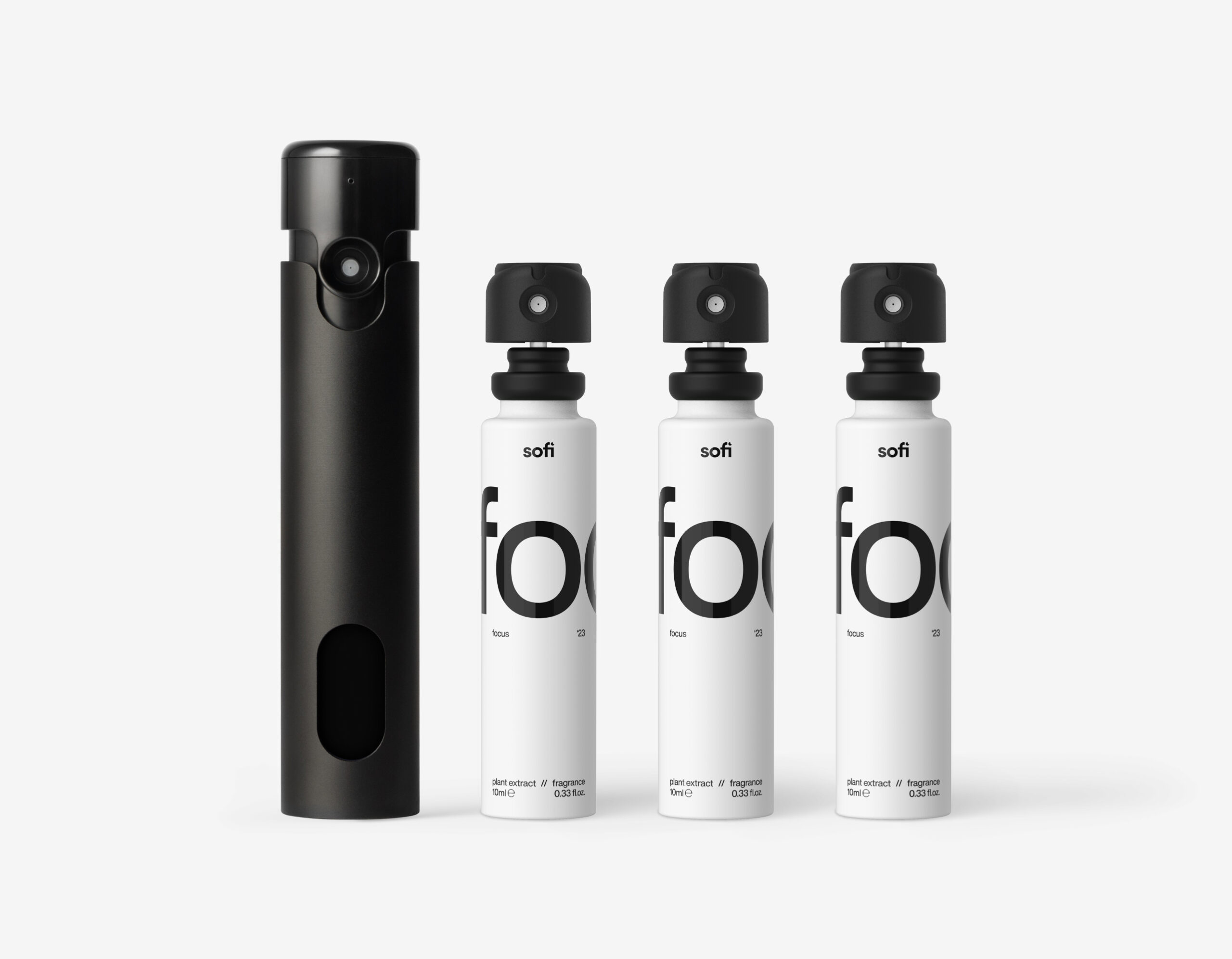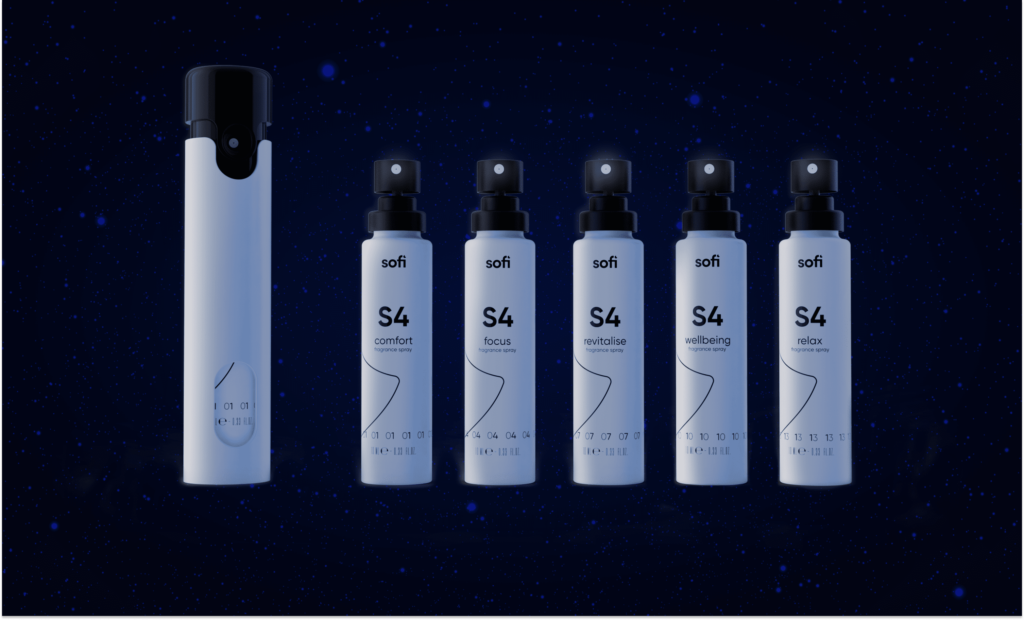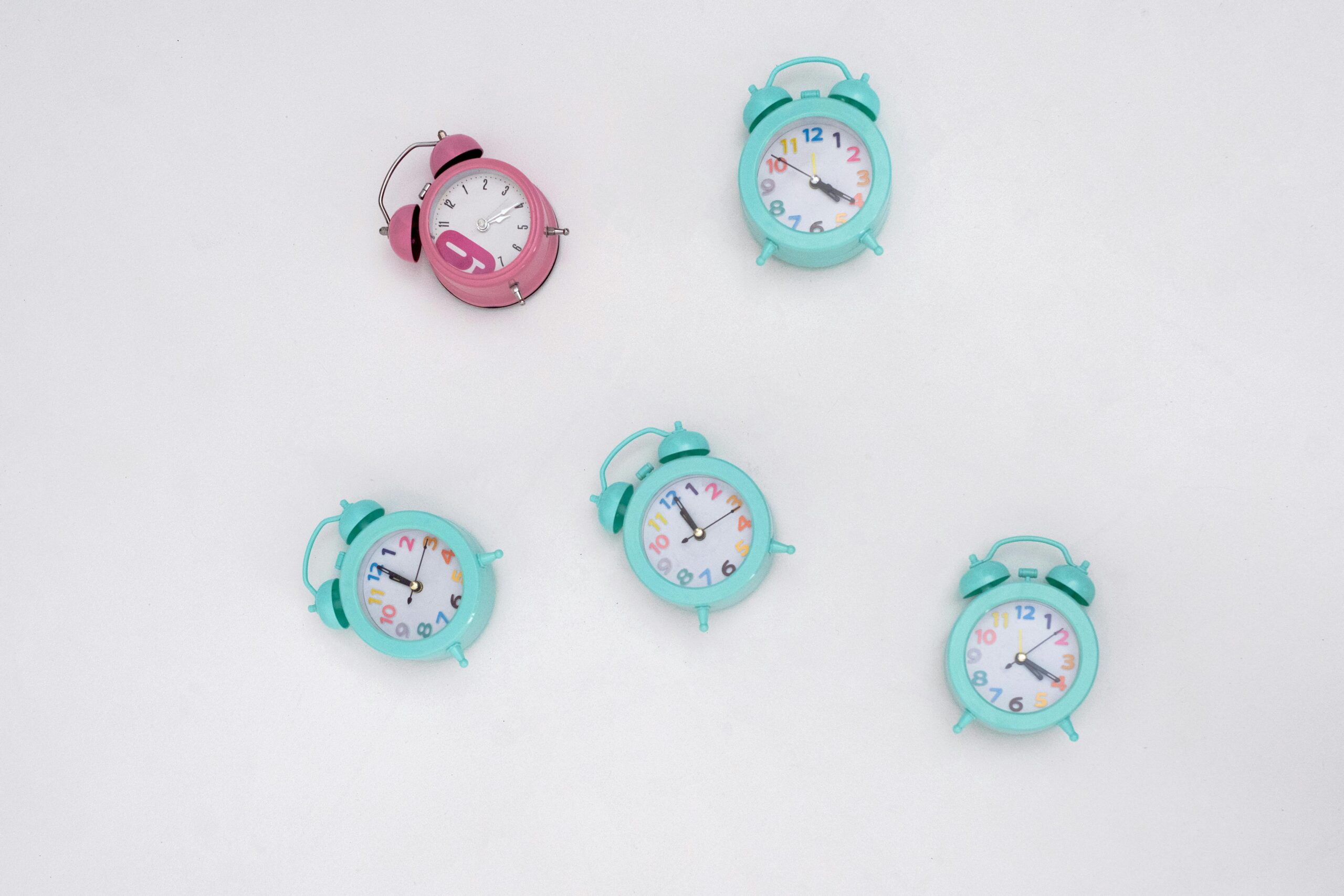
on the role of functional fragrances and how we feel
how fragrances can alter the way we feel
Biologically speaking, we know that our sense of smell plays a highly essential role in our cognitive functioning, and particularly when it comes to the regulation of stress and emotion.
In fact, early research estimates that what we smell catalyses roughly 75% of our total moods. In turn, our moods and emotions impact the majority of our day-to-day thoughts and decisions, steadily nudging the course of our lives in subtle but significant ways (1, 2).
As a result, fragrances of all different kinds are used in shopping centres, home goods stores, restaurants, car dealerships, and even train stations in an attempt to foster an emotion or inspire a particular behaviour or approach.The ‘function’ of these scents can range from relaxing you, to energising you - most often in the hope that by shifting your emotion, they’ll increase your likelihood of you buying whatever they are selling.
But not all functional fragrances are used for marketing purposes, of course! There are plenty of examples where you probably already employ the use of fragrance in order to achieve a particular function, whether that’s a spritz of lavender on your pillow before bedtime or lighting a scented candle that takes you back to memories of your childhood or being with family, maybe a fireplace or a camp ground, even Christmas!
Neurobiological research even shows that not only can fragrance activate emotional areas of the brain (which we can witness using electrophysiological (EEG) studies of the brain), but they can also trigger a memory or an emotional response before we even understand why (3).
Now more than ever, science is keen to understand whether the world of fragrance - this ancient world that exists in the part of our brains deeply intertwined with our sense of self, thoughts, memories, and emotions - holds the potential to change our lives for the better.
Enter the next phase of sofi’s mission to reconnect people and plants, with personalised, data-driven, 100% plant-based functional fragrances.
functional fragrance: the missing piece

The question is: can we make functional fragrances that enable individuals to tune into a better feeling, without the consequences to our health that are often posed by other drugs?
You see, there’s no shortage of consumer products that alter the way we feel; most of which can easily be classified as a drug, regardless of whether or not we choose to think about them that way. From caffeine and sugar to nicotine and salt, these substances comprise part of our most beloved rituals, creating habits which can ultimately carry life-changing health impacts for us.
But what if there was another way? What if it were possible to experience some or all of the immediate and temporary effects offered to us by substances such as nicotine or anti-anxiety meds, without all the side-effects and potential to harm our health? And perhaps one step further, what if we could enable a whole new range of sensory experiences?
Well, the use of particular smells, scents, and perfumes to enhance mental, physical, and spiritual well-being is really nothing new. The practice of aromatherapy, for example, defined as, “the use of plant extracts and essential oils for therapeutic healing purposes,” dates all the way back to ancient civilizations such as India, Egypt, and China (4).
There we see evidence of plant oils and fragrances being used for thousands of years in the treatment of both physical and psychological disorders - from headaches and pain, to insomnia, depression, and even digestive issues (5).
For centuries, both herbal and traditional medicine have long embraced the idea that fragrance can benefit us and add to our lives in meaningful, complex ways that modern science couldn’t (can’t) yet fully understand.
In reality, many cultures eclipse the West when it comes to their proficiency in harnessing the power of scent. Take this excerpt from Ethnobotanist, Dr. Michael Balick, for example:
“Throughout the Pacific, Tahitian gardenias are used to scent massage oil. Fragrant at night time, the flowers are gathered in coconut leaf baskets, where they are infused for two weeks into coconut oil. This oil is used to massage tired and aching muscles, to bring comfort to elderly people, and to make the skin of young dancers glisten in the moonlight.”
He goes on to explain that, “Fragrance plays a deep role for indigenous peoples who believe that fragrance impacts mood and ultimately health (6).” And science agrees that the aroma of many of our most familiar herbs is actually where their medicine lies. This can be observed in recent studies that indicate the role of essential oils in positively augmenting our endocannabinoid system, helping us to mitigate disease and various other pathologies (7).
As Pamela Spence, sofi’s in-house medical herbalist knows, “The aromatic oils are some of the least dense of the chemical constituents in a plant and so they literally float into the air, carrying the scent with them. We all know this sensation from crushing a lavender flower between our fingers, picking a leaf of basil from the kitchen windowsill to add to a salad, or even encountering the steam coming off a cup of freshly brewed herbal tea.
These amazing constituents enter the body through the nose, interacting directly with the cranial nerve found there and have an effect on our brains. Not to mention they are often very highly anti-microbial (one of the reasons so many of them are used in cooking is not just for flavour, but to help preserve the food itself, which is imperative if you live without electricity as our ancestors did and some people still do).
While studying my herbal degree we students harnessed the ability of rosemary to improve blood flow (and therefore oxygen) to the brain and wake us up in the 4pm lecture slot at the end of a long week. A tiny bottle of rosemary essential oil would be discreetly passed along the row and, somehow, we would all make it through to the end of the lecture. This is a good example of harnessing plant power in a positive way rather than reaching for yet another cup of coffee (which is also a herbal medicine but not so good for us when overused!)”
When it comes to the plants Pamela most often prescribes for their aromatic and therapeutic purposes, she shared, “There are two aromas that I often prescribe for patients who come to me in my practice. The first is rosemary, not so much for keeping them awake, but because of the traditional association of rosemary with grief and remembrance.
When a patient is grieving, I tell them to buy a rosemary plant and sit it somewhere they pass several times a day (often by the kitchen door). When they pass by, I ask them to run their hands up the plant (the essential oil is contained in tiny oil sacs on the underside of the leaf), then to cover their nose and mouth with their hands and take a deep breath in. They should then take a few moments to think of their loved one and then get on with their day. This little ritual has several purposes - it makes a definitive time in the day for thinking of the person they have lost, it gives them a focussed way to do this, and the rosemary essential oil is an excellent mild-antidepressant, mood lifter and energy bringer to help them get through the day.
"The second fragrance I regularly prescribe is rose. Rose touches most people very deeply. It is also steeped in myth and tradition and these stories are important. For herbalists like me, we prize its ability to bring calm and comfort and a way of allowing patients to face difficult emotions with a sense of distance, meaning that they do not need to experience the emotion in its full intensity. One of my patients has described it as 'being wrapped in a comfort blanket while you face something that feels very difficult'.
The medicine of rose is most definitely in its perfume. So I suggest to patients that they can buy rose essence and wear it as perfume - or just have it near them to smell when they feel overwhelmed. The very best way to access this medicine, however, is just to go and smell the rose flower in bloom. Often patients are delighted by the idea that they are actually being told to stop and smell the roses!”
measuring the “function” in functional fragrance
Fragrances, especially beautiful ones, encourage the regulation of our mood and mindset, and can even trigger our vagus nerve and sympathetic nervous system (the system of rest and digest), by encouraging us to pause and take deeper, more mindful breaths. And, of course, we already know that how we feel - both mentally and physically - in any given moment, can influence how risky the decisions are that we make, how creatively we can think, and even our ability to focus on the task in front of our eyes (8, 9).
With that being said, the link between fragrance and emotion depends entirely on the individual’s life experience, as well as their cultural background, the context in which a person smells the scent and even the food they last ate!
In this way, our sense of smell is innately unique to us as an individual, and a range of variable factors can influence exactly what different types of smells do what for us and when (10).
As it stands, our ability to analyse and draw meaningful conclusions from functional fragrances sold on health food store shelves is non-existent. And our faculty to recommend particular scents to you based on a data-base of individuals with similar needs and preferences just isn’t there yet. The key word being: yet…
So what if we dared to imagine a world where functional fragrances could better our lives in a scientifically-measurable and material way?
What if, just like taking three sprays of valerian or passiflora each evening to improve our sleep, we could have a fragrance tailored for specific occasions that actually helped?
One that wakes us up, revitalising us in the morning, one that boosts our focus midday while we work - (forget refilling your coffee cup!) - and one that helps us wind down with our favourite comforting scent at the end of a long day (perhaps a little lighter on the wine)?
We know there is power in aroma’s profound immediacy of effect and we know that aromatic compounds are potentially the most underutilised, yet potent tool in our wellness toolbox.
While our sofi plant pod remedies for sleep and calm can provide noticeable benefits within 10 days, they are there to do long-term work, offering adrenal support and gently promoting a return to homeostasis when dosed and consumed regularly. Functional fragrances, on the other hand, have the potential to offer instantaneous moments of respite at different points throughout the day, when calm and the ability to sleep might not be our primary concern.
The combination of these two highly complementary modes of delivery could hold the key to unlocking a brand new paradigm of natural relief and ultimately impact how we feel.
As the first platform to offer unique and individual, N-of-1 discoveries about the interaction between people and plants, we are thrilled at the opportunity to expand sofi’s development into the world of functional fragrance.
Coming very soon! Sign up now to register your interest.
Text References:
- Bell. S., & Bell, C.P., «Future Sense: Defining Brands through Scent», The Journal of Marketing Society 38, Autumn, 2007.
- Kozlowski D, Hutchinson M, Hurley J, Rowley J, Sutherland J. The role of emotion in clinical decision making: an integrative literature review. BMC Med Educ. 2017 Dec 15;17(1):255
- Sowndhararajan K, Kim S. Influence of Fragrances on Human Psychophysiological Activity: With Special Reference to Human Electroencephalographic Response. Sci Pharm. 2016 Nov 29;84(4):724-751
- Ali B., Al-Wabel N.A., Shams S., Ahamad A., Khan S.A., Anwar F. Essential oils used in aromatherapy: A systemic review. Asian Pac. J. Trop. Biomed. 2015;5:601–611.
- Sowndhararajan K, Kim S. Influence of Fragrances on Human Psychophysiological Activity: With Special Reference to Human Electroencephalographic Response. Sci Pharm. 2016 Nov 29;84(4):724-751
- Balick, M. J., & Cox, P. A. (2021). Plants, people, and culture: The science of ethnobotany. New York: Scientific American Library.
- Johnson SA, Rodriguez D, Allred K. A Systematic Review of Essential Oils and the Endocannabinoid System: A Connection Worthy of Further Exploration. Evid Based Complement Alternat Med. 2020 May 15;2020:8035301.
- Kozlowski D, Hutchinson M, Hurley J, Rowley J, Sutherland J. The role of emotion in clinical decision making: an integrative literature review. BMC Med Educ. 2017 Dec 15;17(1):255.
- Kusev P, Purser H, Heilman R, Cooke AJ, Van Schaik P, Baranova V, Martin R, Ayton P. Understanding risky behavior: the influence of cognitive, emotional and hormonal factors on decision-making under risk. Front Psychol. 2017;8:102.
- Sharma A, Kumar R, Aier I, Semwal R, Tyagi P, Varadwaj P. Sense of Smell: Structural, Functional, Mechanistic Advancements and Challenges in Human Olfactory Research. Curr Neuropharmacol. 2019;17(9):891-911

